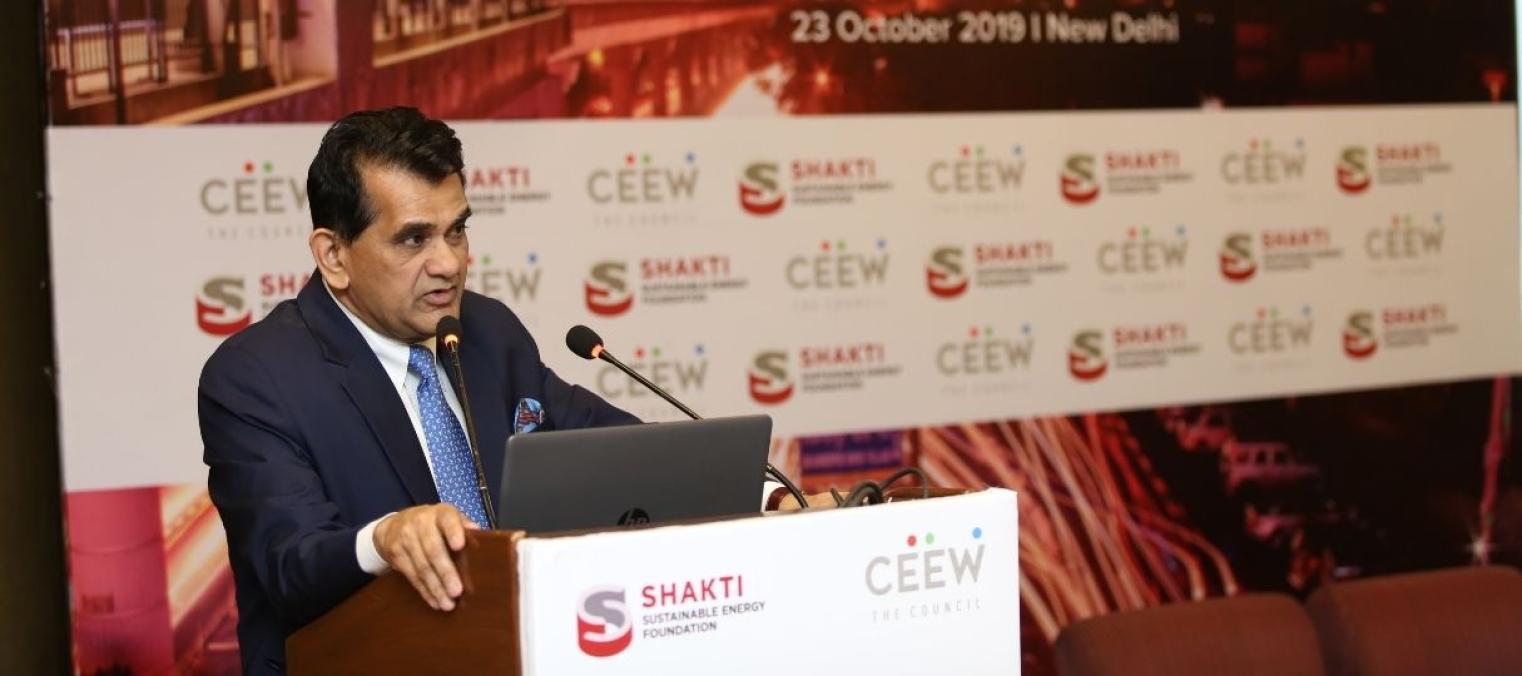




New Delhi (23 October 2019) – Indigenisation of electric powertrain components and battery pack assembly could produce a 5.7 per cent higher output value addition (USD 2.7 billion) for the Indian auto industry in case of an electric vehicles (EV) transition, according to an independent study released today by the Council on Energy, Environment and Water (CEEW). In order to tap into this potential, India must augment capacity in manufacturing electronics and electrical components. This would also enable India to retain its export share, given a global shift towards electric mobility. The study, supported by the Shakti Sustainable Energy Foundation, assesses the future course of the auto industry by comparing a scenario with 30 per cent electric car sales in 2030 against a business-as-usual scenario with limited EV penetration. Shri Amitabh Kant, CEO, NITI Aayog, released the study at CEEW’s dialogue ‘Urban Mobility and electric vehicle transition in India’
Looking at the trinity of jobs, growth, and sustainability, the study estimates that jobs in internal combustion engine (ICE) manufacturing would increase by 7 per cent between 2018 to 2030, even if India were to achieve 30 per cent EV sales during this period. However, this would be 20 to 25 per cent lower than the number of jobs supported, if the industry were to only produce ICE vehicles. Further, the auto industry would require creating a trained workforce in the country to achieve a successful transition to EVs. Hence, reskilling along with vocational training would be critical to achieving the EV sales target.
Shri Amitabh Kant, said, “We are moving towards a shared, connected, and zero emissions world. The initial cost of EVs is likely to be on par with ICE vehicles in 3-4 years. For India’s auto industry to stay competitive worldwide in the coming decade, we must make India a global centre for manufacturing of electric two-wheelers, three-wheelers, and compact cars. Innovations in battery manufacturing and setting up giga factories in the country will also be crucial. I congratulate the team at CEEW for timely release of research on India’s EV transition.”
Karthik Ganesan, Research Fellow, CEEW, said, “India’s transition to electric mobility has the potential to not only reduce oil imports, address air pollution, and help meet India’s climate commitments but can also spur the growth of new industries and job opportunities. Indigenisation is key to ensuring that the EVs transition generates a higher value add by enabling OEMs to build more cost competitive products. Since India does not have official targets for EV penetration at present, there is a delay in investments and hesitancy in developing full-fledged supply chains. Policy interventions that improve the attractiveness of electric cars vis-a-vis ICE cars, targeting both supply and demand, are urgently needed if EV targets are to be pursued for 2030.”
The CEEW study also finds that importing battery cells for EVs would help drive a more favourable trade balance when compared to importing crude oil for ICE cars sold in 2030. The import burden per ICE car is 4.1 times higher for private vehicles and 5.7 times higher for commercial vehicles compared to the import burden of an EV over its lifetime, considering oil and cell imports, respectively.
In addition, the study finds that for India, the in-use CO2 emissions per electric car are 2 to 16 per cent lower than that of an equivalent ICE car over its lifetime. This highlights the climate benefits of an EV transition in India.